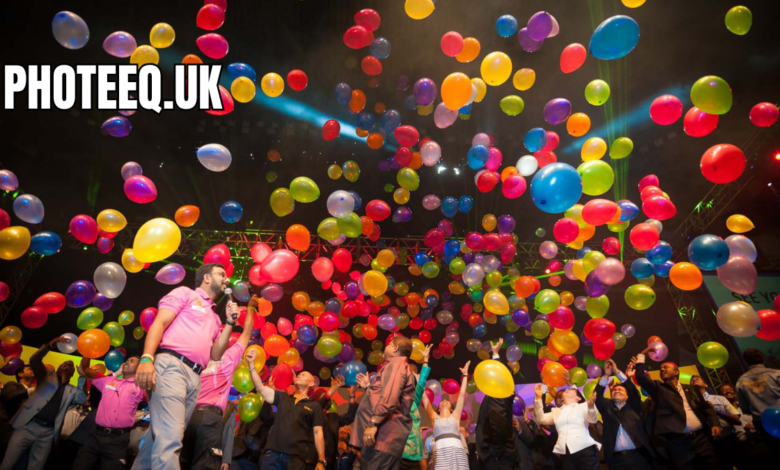Event Photography Services for Weddings and Corporate Events

Introduction
Event photography is an art form that goes beyond merely taking pictures; it’s about preserving moments, emotions, and memories that people can cherish for years. Whether it’s a grand wedding, a corporate gala, or a birthday party, event photographers play a vital role in immortalizing these special occasions. This guide explores the intricacies of event photography, from preparation to execution and beyond, offering valuable insights for beginners and professionals alike.
Understanding Event Photography
What is Event Photography?
Event photography encompasses capturing images of events such as weddings, corporate meetings, parties, and public gatherings. The objective is to document the essence and story of the event through visual storytelling. Each event is unique, and a skilled photographer adapts to its atmosphere, ensuring the photographs reflect the occasion’s mood and significance. This branch of photography requires versatility, as it involves working in various environments, from dimly lit banquet halls to brightly lit outdoor spaces.
Skills Required for Event Photography
Event photography demands a mix of technical expertise and soft skills. A photographer must understand camera settings, lighting techniques, and composition rules to ensure professional-quality images. Equally important are interpersonal skills, such as communicating effectively with clients and attendees, anticipating moments, and maintaining a calm demeanor in high-pressure situations. Creativity is the final piece of the puzzle, enabling photographers to frame shots that tell compelling stories.
The Role of an Event Photographer
An event photographer’s responsibilities extend beyond taking pictures. They must plan shots, stay alert to capture key moments, and adapt to unpredictable circumstances. Clients expect them to deliver a comprehensive visual narrative of the event, which includes candid moments, posed portraits, and detailed shots of the venue and decor.
Preparing for Event Photography
Research and Planning
Proper planning is the cornerstone of successful event photography. Understanding the event’s theme, schedule, and expectations helps photographers prepare effectively. Before the event, photographers should discuss the client’s specific requirements, such as must-capture moments or VIP guests. Researching the venue in advance also aids in identifying potential challenges, such as lighting conditions or space constraints.
Equipment Checklist
Having the right equipment ensures that a photographer is ready to tackle any situation. Essential gear includes a high-quality DSLR or mirrorless camera, versatile lenses (such as a fast prime and a zoom lens), and a reliable flash system. Backup equipment, including extra batteries, memory cards, and a secondary camera, is crucial to avoid disruptions. Additional accessories, like tripods, reflectors, and lens cleaning kits, enhance preparedness.
Pre-Event Communication
Clear communication with the client is critical to meeting their expectations. Photographers should schedule a pre-event consultation to discuss the event’s timeline, key moments, and deliverables. A well-drafted contract outlining services, payment terms, and usage rights protects both parties and avoids misunderstandings.
Mastering Techniques for Event Photography
Camera Settings and Adjustments
Choosing the correct camera settings is essential for capturing high-quality images in diverse conditions. For instance, indoor events often require higher ISO settings and wider apertures to compensate for low light. Shooting in manual mode allows photographers to have complete control over exposure, ensuring that every shot is perfectly balanced.
Composition and Framing
Strong composition enhances the visual impact of photographs. Techniques like the rule of thirds, leading lines, and symmetry create balanced and aesthetically pleasing images. Event photography often involves capturing a mix of candid and posed shots. While candid shots capture genuine emotions, posed shots provide polished and professional results.
Lighting for Events
Lighting can make or break a photograph. Natural light is ideal for outdoor events, while indoor settings often require the use of external flashes, diffusers, or continuous lighting. Understanding how to bounce flash or use reflectors helps achieve soft, flattering light that enhances the subject without harsh shadows.
Managing Movement and Crowd Dynamics
Events are dynamic, with constant movement and interaction. Photographers need to anticipate action, position themselves strategically, and be ready to capture fleeting moments. Crowd management skills, such as politely directing people for group shots, are equally important for maintaining order and efficiency.
Post-Event Workflow
Organizing and Backing Up Photos
After the event, organizing and backing up photos is a priority. Photographers should create multiple backups—on external drives, cloud storage, or both—to ensure data safety. Sorting images into categories, such as candid, posed, and decor, streamlines the editing process.
Photo Editing and Retouching
Editing is where raw images transform into polished masterpieces. Tools like Adobe Lightroom and Photoshop enable photographers to adjust exposure, color balance, and sharpness while removing distractions. Retouching ensures that the final images meet professional standards while maintaining a natural look.
Delivering Photos to Clients
Timely delivery of photos is crucial for client satisfaction. Photographers can offer digital galleries, USB drives, or printed albums, depending on the client’s preferences. Providing a curated selection of the best images, along with options for additional edits or albums, adds value to the service.
Building a Successful Event Photography Business
Branding and Marketing
Establishing a strong personal brand helps photographers stand out in a competitive market. A professional portfolio showcasing diverse events, an engaging website, and active social media profiles create a lasting impression. Consistent branding across platforms builds trust and credibility.
Pricing Your Services
Pricing should reflect the photographer’s experience, the complexity of the event, and the deliverables provided. Offering tiered packages with clear inclusions allows clients to choose a plan that suits their needs and budget.
Networking and Building Client Relationships
Networking with event planners, venue managers, and other industry professionals opens doors to new opportunities. Satisfied clients often become repeat customers or recommend the photographer to others, making word-of-mouth referrals an invaluable asset.
Conclusion
Event photography is both a science and an art, requiring technical expertise, creative vision, and excellent interpersonal skills. From meticulous preparation to post-event editing, every step contributes to creating a visual narrative that clients will treasure forever. For aspiring photographers, embracing continuous learning and staying updated on industry trends are keys to success.
Also Read: Creative Photography

